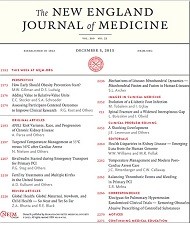Brooke Winner, Jeffrey F. Peipert, Qiuhong Zhao, Christina Buckel, Tessa Madden, Jenifer E. Allsworth, Gina M. Secura

Abstract
Background
The rate of unintended pregnancy in the United States is much higher than in other developed nations. Approximately half of unintended pregnancies are due to contraceptive failure, largely owing to inconsistent or incorrect use.
Methods
We designed a large prospective cohort study to promote the use of long-acting reversible contraceptive methods as a means of reducing unintended pregnancies in our region. Participants were provided with reversible contraception of their choice at no cost. We compared the rate of failure of long-acting reversible contraception (intrauterine devices [IUDs] and implants) with other commonly prescribed contraceptive methods (oral contraceptive pills, transdermal patch, contraceptive vaginal ring, and depot medroxyprogesterone acetate [DMPA] injection) in the overall cohort and in groups stratified according to age (less than 21 years of age vs. 21 years or older).
Results
Among the 7486 participants included in this analysis, we identified 334 unintended pregnancies. The contraceptive failure rate among participants using pills, patch, or ring was 4.55 per 100 participant-years, as compared with 0.27 among participants using long-acting reversible contraception (hazard ratio after adjustment for age, educational level, and history with respect to unintended pregnancy, 21.8; 95% confidence interval, 13.7 to 34.9). Among participants who used pills, patch, or ring, those who were less than 21 years of age had a risk of unintended pregnancy that was almost twice as high as the risk among older participants. Rates of unintended pregnancy were similarly low among participants using DMPA injection and those using an IUD or implant, regardless of age.
Conclusions
The effectiveness of long-acting reversible contraception is superior to that of contraceptive pills, patch, or ring and is not altered in adolescents and young women. (Funded by the Susan Thompson Buffet Foundation.)
Brooke Winner, M.D., et al, Effectiveness of Long-Acting Reversible Contraception. N Engl J Med 2012; 366:1998-2007